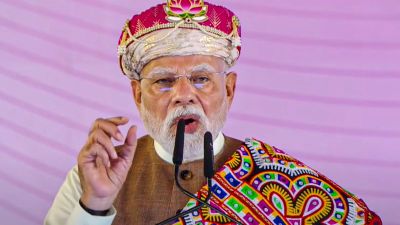CPM’s economic guru calls for a reality check, need for private enterprise
An article on the changing role of Communists in the current Indian scenario by JNU professor and CPM’s economic guru Prabhat Patnaik m...

An article on the changing role of Communists in the current Indian scenario by JNU professor and CPM’s economic guru Prabhat Patnaik may tilt the scales in the ongoing ideological battle within the party over the economic reforms being pushed by West Bengal Chief Minister Buddhadeb Bhattacharjee.
The article, ‘‘The Communists and the Present,’’ in the last issue of Social Scientist (a bimonthly Left research journal) argues for a commitment to parliamentary multi-party democracy—a radical shift from the party’s theoretical standpoint—and, more importantly, an acknowledgment of the role of ‘‘private enterprise,’’ and ‘‘capitalist production.’’
Patnaik’s piece has already become a major reference text not just for a significant number of middle-rung party functionaries but for the party’ s senior decision-makers as well.
With the 800 delegates at the 18th party Congress unable to ratify the second part of the ‘‘political organization document’’ which dealt specifically with ideological issues, this article may play a key role in helping the Central Committee draft its final document.
In effect, the article falls back on Lenin and urges fellow Communists not to evade reality. It says of the ‘‘two distinguishing features of Lenin’s political praxis’’ the first was to ‘‘engage necessarily and always with the present, the given condition…’’ In other words, the underlying message of this argument is: Don’t run away comrades, we have to face the economic reality.
When asked whether his argument was an endorsement of Buddhadeb Bhattacharya’s economic reforms, Patnaik told The Indian Express: ‘‘A provincial government functions within restraints and there are constitutional obligations. My piece is more to do with the party’s role.’’
Patnaik’s words carry weight. He is considered the party’s foremost economic consultant. He was in the limelight recently for leading the attack on Planning Commission Deputy Chairperson Montek Singh Ahluwalia for including ‘‘foreign experts’’ in the commission’s review panels. The Prime Minister had to intervene in that war and cancel all panels.
In his article, Patnaik has underlined the fact that the Chinese economic model—travelling a nationalist path—cannot be imitated and parliamentary democracy should be the only form of government that Indian Communists should uphold.
This should be music to the ears of former Chief Minister Jyoti Basu. Since the late ’80s, Basu has been saying that no way could the Indian Communist movement remotely consider following a single-party model as in the former Soviet Union or in China. Similarly, Buddhadeb Bhattacharjee has been pleading for a more ‘‘open-minded’’ engagement with current economic realities.
Patnaik says: ‘‘…A united nation against imperialism would have to allow for substantial private enterprise. Not only would there be petty production, including peasant production (apart from cooperative and collective production wherever possible), but there would also be capitalist production, in addition of course to state sector production in key areas, under a regime of national economic planning.’’
Patnaik accepts the role of FDI in his vision of the ideal economic model under the current circumstances. He writes, ‘‘Such a regime is possible only with controls over capital flows into and out of the country.’’ He calls for a fashioning of the financial sector in a way that it would subserve the needs of a productive economy which he repeatedly underlines would have to be a planned economy.
After having laid down the essential aspects of this economic model, he says that this path of development could not be called simply ‘‘capitalist’’ though ‘‘it incorporates capitalist production’’. The differences with the Nehruvian mixed economy model lies in its stress on land reforms, strict enforcement of tax laws and its guarantee of the government’s role in education, health, employment and other social goals.
Photos


- 01
- 02
- 03
- 04
- 05





























